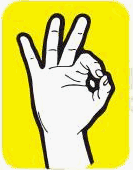 Scott Adams recently proposed a ‘Ratting System’ that allows employees to anonymously point out their peers’ flaws. That post merged with a lot of other mental systems to generate a response idea: A Raving System. (For more information, see Part One: Introduction and Part Two: Implications.)
Scott Adams recently proposed a ‘Ratting System’ that allows employees to anonymously point out their peers’ flaws. That post merged with a lot of other mental systems to generate a response idea: A Raving System. (For more information, see Part One: Introduction and Part Two: Implications.)

I’m not a manager, so I can’t really evaluate a Raving System’s efficacy nor its viability in a corporate setting. I would love feedback from those who can.
I can, however, test the underlying concepts. And, in fact, I have.
I took some standard problem-solving advice and started small. I gave myself a Raving System. It’s called the Happy Dance. Some of you may have found it, but most of you definitely have not. Feel free to check it out. Suffice it to say, it has begun to form a good habit for me. Low-quality and internet-dependent though it may be.
I’ve also applied this concept in my classroom in two ways. Like several other ESL teachers I know, I give out rewards for participation in class. Mine are called oracles.1 Oracles, like many employee assessment strategies, play a part in determining the students’ grades. However, I’ve also tried allowing the students to give them to each other. It was a faltering attempt, but it proved interesting. I plan to revisit the concept soon.
More successfully, I have a determined start to my classes. Before anything else, I ask students to share something special—however small—from the previous week. It not only gives them a chance to warm up to speaking English in class but also helps them look at a monotonous week of study in a new way. It took a while to catch on. Some students never responded. Most eventually learned to have something to say. A few let it change their outlook on life.
I’m certainly not alone in this outlook. The most recent example I’ve found is The Thank You Project, a blog I stumbled across via GOOD. I have no idea who Julia is, but I find her happiness with life worth sharing.

@Businesspeople: If you’ve seen a system like this, I’d love to know about it. If you try it, let me know how it turns out.
@The rest of us: This system, if truly valuable, need not be limited to business. I’d say it must not be. Do you or have you ever done something like this? Tell me about it. If you haven’t, I suggest you try it. And, of course, let me know how it works out for you.
- It’s an oral English class. If that still confuses you, just go on. ↩

 Group Morale. I increasingly believe people need to be pushed to look for the good around them. I have no trouble finding things I don’t like. I suspect most people have the same proclivity.
Group Morale. I increasingly believe people need to be pushed to look for the good around them. I have no trouble finding things I don’t like. I suspect most people have the same proclivity. Feedback. Obviously, that’s what this system is. It tells you what your employees value, who is getting overlooked, who is satisfied and who deserves more responsibility, recognition or attention. Note those employees getting fewest commendations and you’ve identified weak links. Include office systems as open for commendations, and your office is an increasingly efficient and satisfying workspace. Perhaps most importantly, you foster an environment where employees are comfortable giving honest, constructive feedback.
Feedback. Obviously, that’s what this system is. It tells you what your employees value, who is getting overlooked, who is satisfied and who deserves more responsibility, recognition or attention. Note those employees getting fewest commendations and you’ve identified weak links. Include office systems as open for commendations, and your office is an increasingly efficient and satisfying workspace. Perhaps most importantly, you foster an environment where employees are comfortable giving honest, constructive feedback. The results could feed into a system of public recognition ranging from a minor daily award to an official performance review. The possibility of getting the award could increase participation. To further increase participation, only those who have made a comment or a designated number of comments within that day/week/month are eligible for the award.
The results could feed into a system of public recognition ranging from a minor daily award to an official performance review. The possibility of getting the award could increase participation. To further increase participation, only those who have made a comment or a designated number of comments within that day/week/month are eligible for the award.